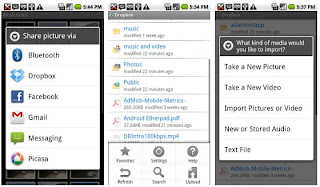
In a few weeks from now, latest versions from two of the finest Linux distributions will be unleashed, bringing along some major changes to the traditional desktop. Ubuntu 11.04 is expected to be released this coming April 28, while Fedora 15 will be out on May 24, 2011. The two will battle it out for Linux desktop supremacy.
What makes these editions special is the fact that both distributions will be offering two completely new user interfaces. Here is a detailed look at how these two veteran distros stack up against each other.
The Desktop:
Since the dark ages of Linux desktop, both Fedora and Ubuntu have sported the overly familiar GNOME 2 look. It goes without saying that the simple, clean and fast desktop environment enjoys a heavy fan base in the Linux world. However as time went on, many people agreed that GNOME was in need of something fresh, something completely new. Hence, developers started working on a totally revamped user interface, now known as GNOME 3 or GNOME shell. This newly designed shell interface was also supposed to be the default desktop environment for Ubuntu 11.04.
Due to philosophical differences between Canonical and the GNOME team, Ubuntu ditched GNOME 3 and started working on their own desktop environment called Unity. Since this announcement, Unity has received some heavy criticism from the Linux community. GNOME 3 too has had its share of bad feedback following some major UI decisions like removing minimize and maximize buttons. Despite these early apprehensions, both projects have managed to bring a much-needed burst of freshness to the stagnating Linux desktop.
But how does this whole GNOME 3 vs. Unity battle affect Ubuntu and Fedora users?
Well, Ubuntu team is working assiduously to prove that their decision to stick with Unity was the right one. On the other hand, GNOME team is making sure it remains the most widely used desktop environment. Hence, the release of Ubuntu 11.04 and Fedora 15 will be the perfect platform to decide which desktop environment wins.
Here's a quick comparison of features offered by GNOME 3 and Unity:
Music Players:
Fedora will be sticking with Rhythmbox, while Ubuntu will be using Banshee as the default music player. The decision, however, hasn’t gone down well with many FOSS supporters as Banshee brings along mono libraries to the Ubuntu code pool. Nevertheless, Ubuntu users will be happy to see many new features like Amazon Mp3 store, Audiobooks support and metadata fix up giving Banshee an edge over Rhythmbox.
Software management:
Natty will include an updated version of Ubuntu Software Center allowing users to rate and review applications. Fedora on the other hand will stick with the traditional Add/Remove Software.
Performance:
Both Fedora and Ubuntu will be using the latest kernel bringing along a lot of performance improvements. Behind the scenes, Fedora will now replace Upstart and SystemV with Systemd that provides a slightly faster bootup (especially on SSDs). In the graphics department, people have raised concerns over GNOME's use of Mutter, which had compatibility issues with many graphic cards; however, Ubuntu’s decision to go with Compiz has been readily welcomed by users.
Security:
This is an area where Fedora will beat Ubuntu hands down. Fedora 15 will come with an optional dynamic firewall daemon based on dbus. Moreover, Fedora already includes SELinux thus making it one of the most secure user-oriented distros around.
Unique features in Ubuntu 11.04:
* Revamped UbuntuOne: Natty will include Ubuntu One with a revamped user interface making it more easy-to-use.
* More indicator applets: GNOME’s traditional panel applets won’t be supported thus making way for more indicator applets.
* 100 papercuts project: This is a great initiative by the Canonical team that aims to fix small usability bugs, which often go unnoticed.
* 2D unity: Ubuntu is also developing a Qt-based 2D desktop for low-end graphic cards so that users with older PCs won’t have any problems upgrading.
Unique features in Fedora 15:
* Improved Power Management: Fedora 15 will include PowerTOP 2.x containing a daemon that tunes system settings dynamically to balance the power consumption and performance.
* Indic Typing Booster: Indic typing booster is a predictive input method for ibus platform that provides word completion for Indic languages. This will enable users to create content in their native language with enhanced speed, accuracy and ease.
* Robotics suite: This is a collection of software that will allow users to try out robotics in a simulation environment.
Common Features:
Though Natty and Lovelock have taken different directions, there are some great new features they'll both offer.
* Firefox 4: Both Ubuntu and Fedora will ship with the latest and greatest version of Firefox that is Firefox 4. The open source browser comes with a boatload of new features that make browsing better, secure and faster.
* Libreoffice: Openoffice will be replaced by its fork Libreoffice thus putting a smile back on the faces of all FOSS supporters.
* KDE 4.6: Fedora users who prefer KDE as well as Kubuntu fanatics will get their hands on the latest version of KDE freshly baked from the oven.
Conclusion:
Despite some radical decisions made by GNOME and Canonical, there are some positive expectations from the Linux community. Along with the much-needed freshness to the Linux desktop, these changes bring along a fresh set of challenges for the Linux community. Moreover, the conspicuous yet exaggerated creative differences among the different teams fosters a healthy competition, thus making Linux desktop ready for the bigger challenges. Though Fedora and Ubuntu have taken contrasting approaches, they'll both offer the new-to-Linux user two high quality choices.
This article was written by Abhishek, a TechSource contributor and longtime FOSS advocate.









































